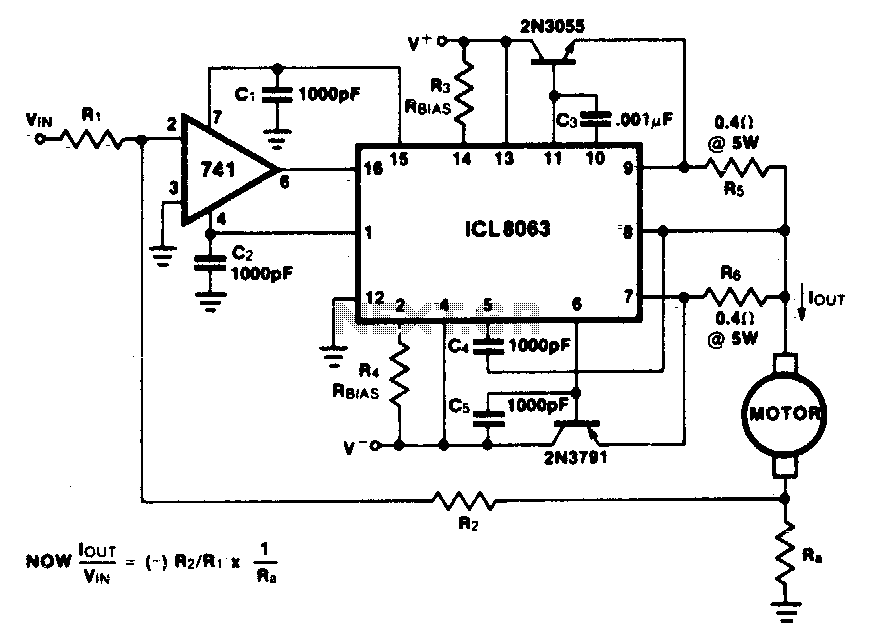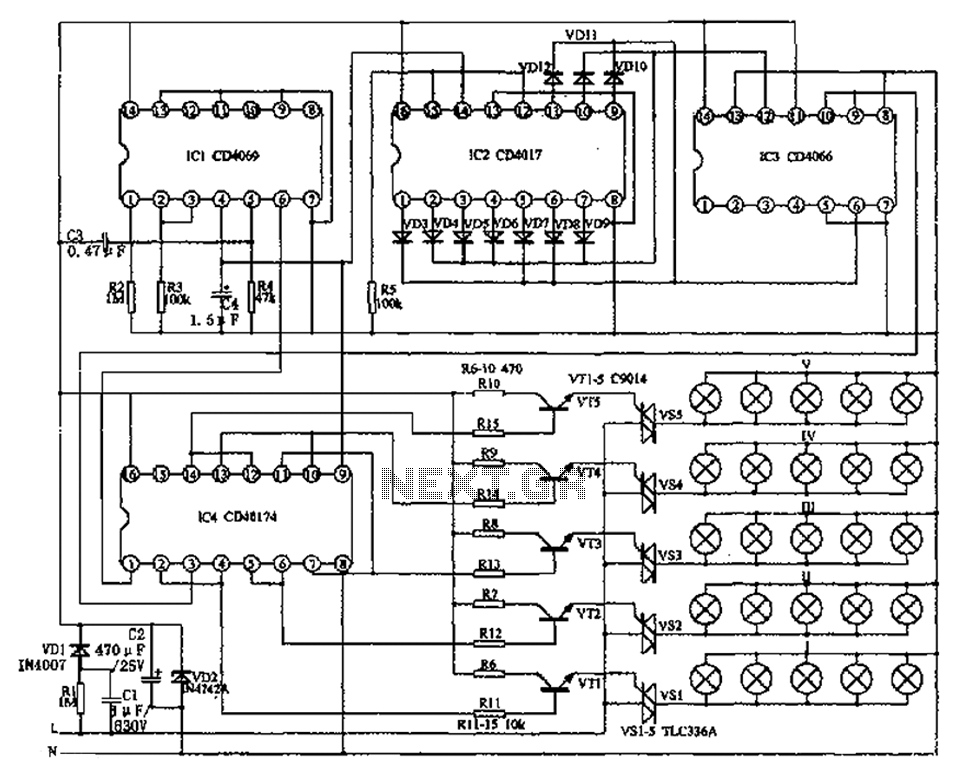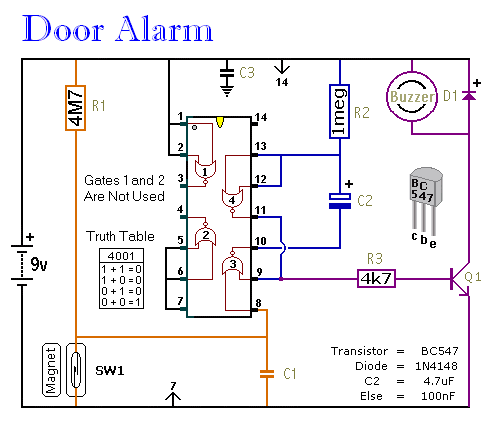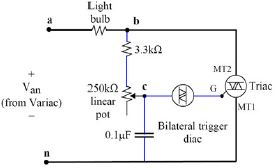
Constant current motor drive circuit

This minimum device circuit can be used to drive DC motors where there is some likelihood of stalling or lock-up. If the motor locks, the current drive remains constant, and the system does not destroy itself.
This circuit is designed to provide a reliable method for driving DC motors while minimizing the risk of damage due to stalling or lock-up conditions. The core functionality relies on a feedback mechanism that monitors the motor's current draw. When the motor stalls, the circuit automatically adjusts the current to a predetermined safe level, preventing overheating and potential damage to the motor and associated components.
The essential components of this circuit typically include a DC motor, a current sensing resistor, an operational amplifier (op-amp) configured as a comparator, and a power transistor or MOSFET for driving the motor. The current sensing resistor is placed in series with the motor to measure the current flowing through it. The voltage across this resistor is fed into the op-amp, which compares it against a reference voltage that corresponds to the maximum allowable current.
In normal operation, when the motor runs without stalling, the current remains below the threshold set by the reference voltage. However, if the motor begins to stall, the current will increase, causing the voltage across the sensing resistor to exceed the reference level. The op-amp will then output a signal that turns off or reduces the drive to the power transistor, effectively limiting the current supplied to the motor.
This approach ensures that the motor can be operated safely under various load conditions without the risk of thermal damage. Additionally, the circuit can be designed to include features such as hysteresis to prevent rapid cycling of the motor drive during minor fluctuations in load, further enhancing reliability.
Overall, this minimum device circuit provides a robust solution for driving DC motors in applications where stalling is a concern, ensuring longevity and operational safety.This minimum de vice circuit can be used to drive dc motors where there is some likelihood of stalling or lock up if the motor locks, the current drive remains constant and the system does not destroy itself.
This circuit is designed to provide a reliable method for driving DC motors while minimizing the risk of damage due to stalling or lock-up conditions. The core functionality relies on a feedback mechanism that monitors the motor's current draw. When the motor stalls, the circuit automatically adjusts the current to a predetermined safe level, preventing overheating and potential damage to the motor and associated components.
The essential components of this circuit typically include a DC motor, a current sensing resistor, an operational amplifier (op-amp) configured as a comparator, and a power transistor or MOSFET for driving the motor. The current sensing resistor is placed in series with the motor to measure the current flowing through it. The voltage across this resistor is fed into the op-amp, which compares it against a reference voltage that corresponds to the maximum allowable current.
In normal operation, when the motor runs without stalling, the current remains below the threshold set by the reference voltage. However, if the motor begins to stall, the current will increase, causing the voltage across the sensing resistor to exceed the reference level. The op-amp will then output a signal that turns off or reduces the drive to the power transistor, effectively limiting the current supplied to the motor.
This approach ensures that the motor can be operated safely under various load conditions without the risk of thermal damage. Additionally, the circuit can be designed to include features such as hysteresis to prevent rapid cycling of the motor drive during minor fluctuations in load, further enhancing reliability.
Overall, this minimum device circuit provides a robust solution for driving DC motors in applications where stalling is a concern, ensuring longevity and operational safety.This minimum de vice circuit can be used to drive dc motors where there is some likelihood of stalling or lock up if the motor locks, the current drive remains constant and the system does not destroy itself.





